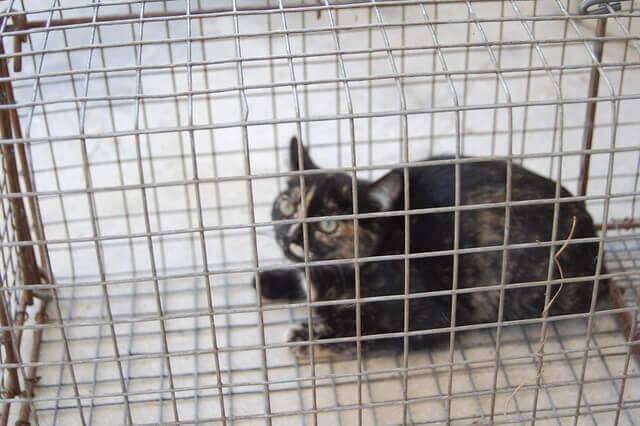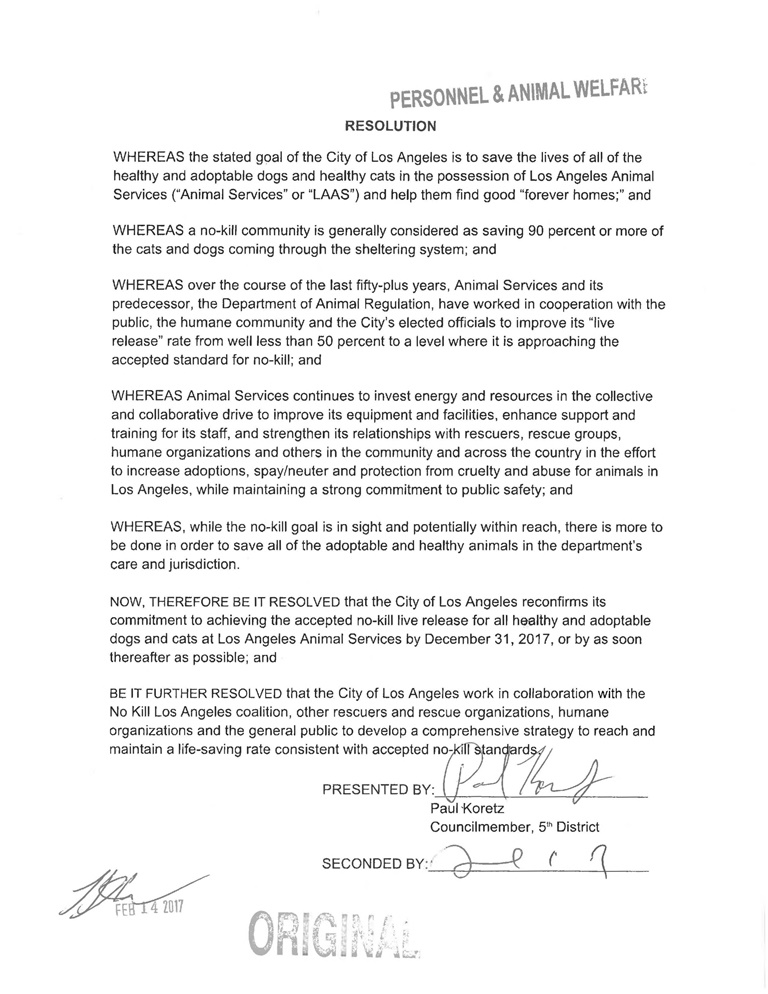
Yesterday, the Los Angeles City Council, America’s second largest city, “re-committed” to achieving a No Kill community. They claim they will have a 90% or better live release rate for dogs and cats by the end of this year.
Let’s take a moment to celebrate what it means. First, it shows how far the No Kill movement has completely set the agenda on sheltering at the highest levels. Ten years ago, we demanded a 90% live release rate and hundreds of cities across the country not only adopted it as a goal; hundreds have succeeded. Second, if Los Angeles is successful, and there is no reason why it shouldn’t be (or why it took this long for that matter), they will be the largest city in the U.S. to do so.
But they have to be honest about it and so far, that has not happened. For example, the city shelter claims to be “saving” 89.4% so far this year. It isn’t true. During the current fiscal year, they have a live release rate of 86% for dogs and 72% for cats. That is certainly improvement over years past, and again that is worth celebrating, but 72% is not 89.4%. The only way to get to 89% is to cheat: to exclude the thousands of dogs and cats who have died in their kennels.
Second, while I established 90% as the No Kill “rule” back in 2007, we are now in 2017 and it is no longer an accurate benchmark for success. Many shelters have since proved that far higher live release rates are possible given the innovations in veterinary and behavior medicine that have taken place in the intervening years. In other words, we’ve learned a lot since 2007. We’ve also achieved a lot, including live release rates of 99%.
For example, Austin, TX, a city with 1,000,000 people in its service area, finished 2016 with a combined live release rate last year of 98%. So far this year, they are at 96.3% for cats and 99.2% for dogs and they have still not ended the killing of all but irremediably suffering animals. We should not be measuring today’s results by yesterday’s standards that allow the needless deaths of animals to be swept under the rug .
Jacksonville, FL, likewise, finished 2016 with a live release rate of 91% for dogs and 91% for cats. But it admits it kills orphaned kittens: “If we have bottle babies at the end of the day and have no foster families or staff able to take them overnight, then euthanasia becomes the only humane option.” Killing orphaned kittens is not No Kill. (Jacksonville is also only “saving” 39% of other — non-dog/cat — species. Their lives matter, too.)
Third, Los Angeles defines No Kill as ‘saving’ the lives of all “healthy and adoptable” dogs and cats. No Kill does not mean “healthy and adoptable.” It does not even mean “healthy and treatable.” It means all but irremediably suffering animals.

Fourth, the term “adoptable” is not only self-serving, it is circular: if they adopt an animal, the animal is adoptable. If they do not adopt the animal (but kill instead), the animals was not adoptable. That’s not logical. And it wasn’t poor draftmanship. It was intentional subterfuge.
Why? Because Los Angeles city shelters kill healthy community cats. And they will continue to kill healthy community cats after the end of this year, because they are under a court order to do so. And they are under a court order to do so because they had poor legal representation when they were sued by nativist groups and they have done virtually nothing to meet the requirements of the court’s ruling. The court told them back in 2009 that if they do an environmental impact assessment, it will remove the injunction ordering them to kill those cats. Seven years later, they still have not done the assessment.
But by framing the resolution in this way, they can claim they are No Kill despite killing healthy community cats because they do not define healthy community cats who are not social with humans as being “adoptable.” It’s a scam. And they know it. And the cats deserve better.
And so do other animals. Last year, the live release rate for rabbits was only 73%, meaning that over one fourth of those animals continue to be killed. Other animals fare worse. With a live release rate of a mere 49%, a non-dog, cat, or rabbit species entering the shelter faces more than a one in two chance of being killed. Their lives matter, too.
I am not going to ignore progress because acknowledging progress is the key to inspiring more of it. In a world that can be cynical, at times monomaniacal focused on bad news at the expense of the good, people can and often do lose sight of hope and existing potential; potential that should and can and must be harnessed for the good of animals.
So I celebrate that Los Angeles live release rates are, overall, climbing for dogs and cats. I celebrate that they are getting closer to 90% for dogs. And I celebrate that they claim to want to do the same for cats.
But they have to be honest about it because claiming success far short of the goal line eliminates the motivation, or perceived need, to continue improving. And to the extent their No Kill resolution defines away community cats, ignores the dismal 49% live release rate for non dog and cat species, and sweeps those who die in their kennels under the rug, the resolution is not honest. It betrays animals. It means continued deaths. And that cannot be allowed to stand.
————-
Have a comment? Join the discussion by clicking here.